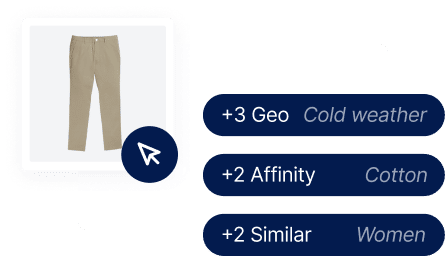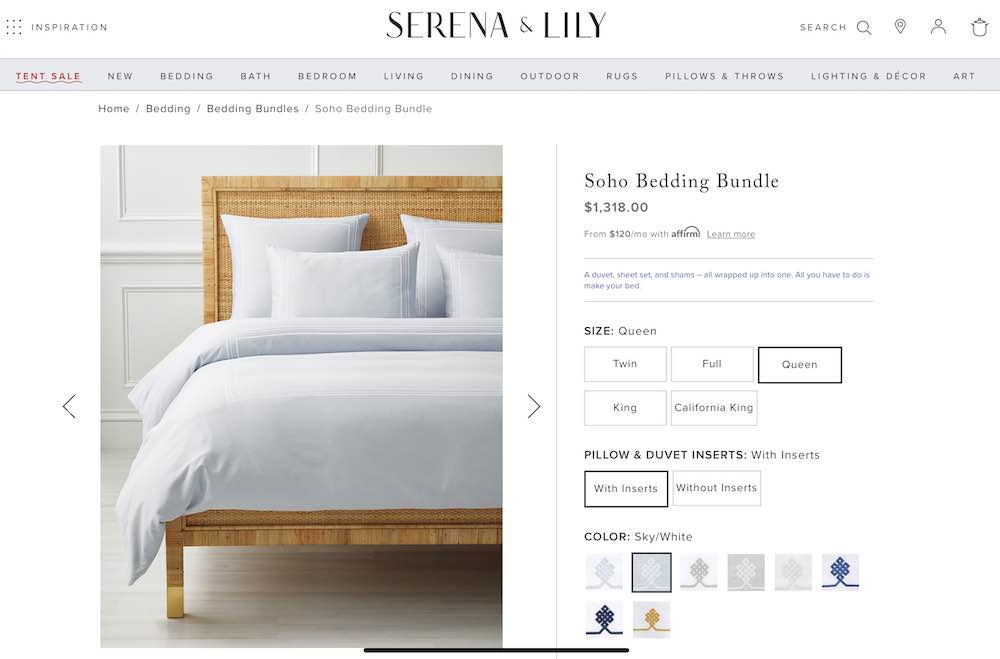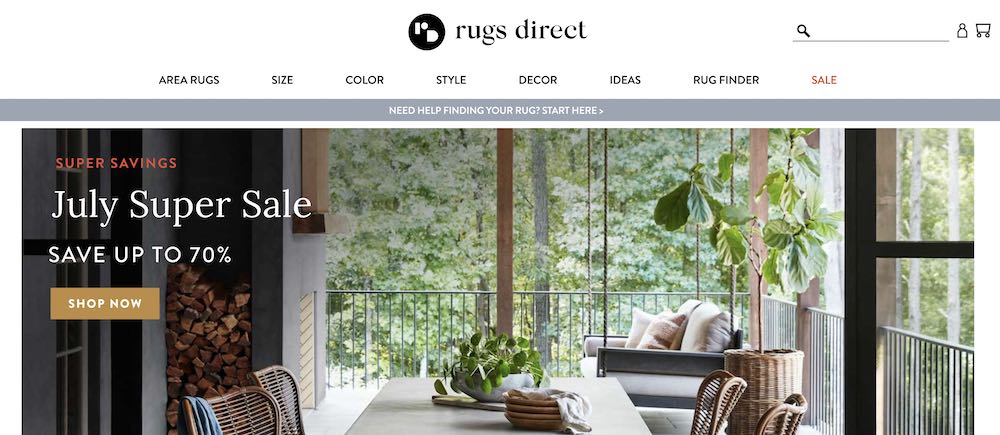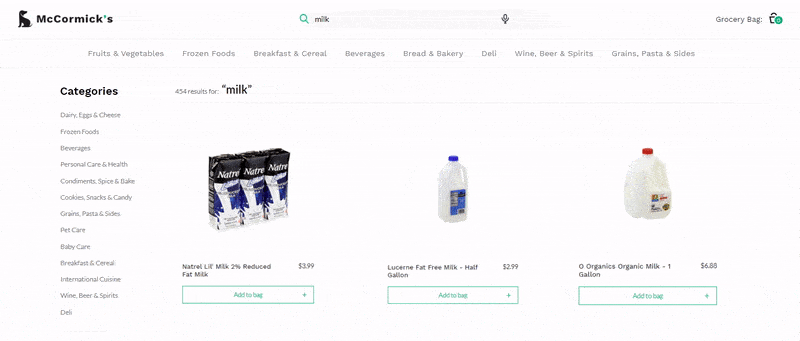When experts predict a recession, it’s likely that you’ll need to adjust certain strategies to remain as close to profitable as possible. Some of these strategies might include, for example, scaling back hiring, being more conservative with spend, or raising your prices.
Although raising your prices during a time of economic uncertainty isn’t unheard of and can even be expected, it’s not always the best option when consumer spending is likely to decrease.
Need some alternatives? Here are 17 ways to recession-proof your business that don’t involve price hikes. Our strategies fall into four main buckets:
- Focus on loyalty and lifetime value
- Boost your revenue streams
- Manage your inventory more effectively
- Capitalize on your key differentiators
Shift Your Focus to Loyalty and Lifetime Value
Acquiring new customers can get expensive. Focusing on loyalty and lifetime value is typically much more cost effective than trying to get new customers to make a purchase. It costs five times as much to attract a new customer than to keep a current one.
Here are several strategies you can test to strengthen your existing customers’ connection to your brand and products.
1. Personalize your customer experience
Personalized experiences have slowly morphed from a nice-to-have to a must-have. 71% of consumers actually expect brands to offer more tailored experiences and communications—without them, you run the risk of losing out on business.
Ecommerce companies can create a more personalized experience in a few ways:
- Creating search, browse, and landing page experiences that are unique to each site visitor
- Asking customers questions about their preferences to tailor their experience now and in the future
- Letting customers pick up right where they left off even after they’ve left your site
- Triggering recommendations on site that relate to what customers are clicking and converting on
How might this work? A brand new visitor on an apparel site might search for “pants.” The site responds by showing them top-selling pants, and the shoppers clicks on a pair of women’s dress pants in a tan color.
Using machine learning to process this behavior, the system identifies that this customer wants to see women’s clothes, seems to be shopping for office wear, and might have an affinity for the color tan. This information is processed instantly to show recommended items that are similar, and to inform what other products this shopper is shown across the site.

2. Invest in good UX
The experience your customers have when they visit your online business plays a huge part in increasing both loyalty and revenue. A study by Forrester found that building a well-designed, frictionless website can boost conversion rates up to 400%.
You can work on improving your ecommerce site experience in a number of ways, including but not limited to:
- Improving the load speed of your web pages
- Optimizing your site navigation and category pages
- Getting rid of dead or broken links
- Editing your website copy to be clearer
- Minimizing zero search results
Achieve larger lifts with simple changes.
Discover our top 5 autocomplete UX best practices that have increased conversions.
3. Use social proof to your advantage
Positive product reviews can drive conversion, but they also help you build loyalty, trust, and authority in your space. 82% of customers say reviews were the deciding factor as to whether or not they made a purchase.
In an economic downturn, those numbers matter—a lot.
Reviews can inspire customers to trust you and convert when displayed prominently on your website and through your email marketing. You can also leverage feedback and content from review-centric channels like Reddit and TikTok. In fact, 49% of TikTok users report that they bought a product after seeing it reviewed on the platform.
But even you don’t have the time or resources to manually sift through #TikTokMadeMeBuyIt videos, product discovery software can leverage social proof to help customers find the best products. Advanced faceted search functionality lets customers sort search results by the number of stars in ratings and reviews, and you can optimize your platform to recommend products with higher conversion rates or the highest reviews.
4. Reduce abandoned cart rates
Abandoned carts are inevitable, but reducing your abandoned cart rate is another strong alternative to raising prices.
Would-be customers get cold feet for a variety of reasons, including experiencing too much friction, getting confused by your user experience, becoming distracted by other tasks, and not being able to find a coupon code.
You can combat these by displaying promo codes through your site’s banner, not requiring login information to make a purchase, and editing your site’s design to be as seamless as possible.

Asking your customer base what they want to see and experience from you from the very start may also reduce abandoned cart rates.
For example, a product recommendation quiz lets you survey customers about what they’re looking for, so that the rest of their shopping experience with you is then tailored directly to what they input. Taking your customers’ needs into account builds trust and helps them have faith in the products that you recommend.
5. Start or ramp up a rewards program
It’s not too late to start a rewards program—or refresh an existing one. Loyalty programs can increase revenue 5-10% and loyalty program members tend to spend 5-20% more than non-members.
But what makes a good loyalty program, exactly? The simple answer is the perks. When the perks you offer are relevant and not unreasonably unattainable, customers will likely feel compelled to give you their business again and again.
Check out Sephora’s Beauty Insider program for an idea of how to structure rewards:

A strong loyalty program is also easy to find, easy to sign up for, easy to use. Customers should feel empowered and confident that they can both sign up and redeem their rewards without too much of a headache.
If your existing loyalty program isn’t as popular as you would like, consider reassessing your perks, ease-of-use, and marketing strategies.
6. Make your return policy more flexible
Most customers agree that returning items is the worst part of online shopping. Creating a more positive return experience could set you apart from retailers who don’t and earn you more repeat business.
For starters, you can increase your return window to give customers more time to send their items back. You can communicate this change on your website as well as through your email and social channels—the response is likely to be positive.
Other ways to make your return policy less daunting are including a shipping label in each package, giving customers the ability to return in-store, and offering easy exchanges for items ordered in the wrong size.
Boost Your Revenue Streams
Instead of raising prices, you can use several proven strategies to increase your average order value and conversion rate. Not only will your profits go up, but getting your customers to add more to cart will make them feel like they’re getting a good deal.
7. Cross-sell whenever possible
Cross-selling has been proven to increase sales by 20% and profits by 30%—making it a great strategy to consider doubling down on.
As you’re exploring how to recession-proof your business, you should strive to offer relevant and personalized product recommendations on as many pages as possible. These can be baked into your product description pages themselves, or they can exist in other high-value locations and conversion points like checkout pages or search results.

8. Create product bundles and bulk discounts
Product offers that make a customer’s shopping experience more convenient are a plus—and bundles and discounts are no exception. Not only can they increase your sales, they’re also an effective way at moving inventory more quickly.
For bundling, you can experiment with mixed and pure bundling to see what works best for your customers. Mixed bundling allows customers to buy items together or separately, whereas pure bundling only lets customers buy certain items as a set. For discounts, buy one get one (BOGO) deals are the most favorable.

9. Offer enticing promotions—wisely
Discounting your merchandise before or during an ecommerce recession may seem counterintuitive, but it can help you generate more sales.
One way to run promotions while still protecting your margins is to offer conditional discounts: i.e. buy two, get one 20% off. This can help you move excess or slower stock without making too much of a difference in your bottom line.

Manage Your Inventory More Effectively
Unplanned slow-moving or dead stock inventory can eat away at your cash flow and profit. When a recession is impending, making adjustments to your inventory and buying strategy is critical.
The following strategies can help you move dusty inventory and make smarter purchasing decisions.
10. Optimize your site’s search engine capabilities
How accurate or effective is your site’s built-in search engine? Improving it could mean the difference between selling out of certain items and not selling any at all.
You can reduce the number of dead-end searches and present customers with attractive, optimized search results using a product discovery platform. The right product discovery software displays personalized search results that optimize for each business’s desired KPIs (like conversion rate, profit, or sell-through). It can also surface insights about popularity and buyer demand that can help inform your purchasing and inventory decisions.

11. Give customers the option to pre-order items
If you’re not sure how big the demand will be for certain items, let your customers tell you through pre-ordering. Pre-order forms will let your customers tell you if an item is worth ordering in smaller or larger quantities.
Not only will offering pre-orders help you better forecast demand , but many pre-order systems take either a portion of payment or the entire payment up front. This will give you more cash and flexibility at a time when you may need it most.
12. Pinpoint the root causes of your dead stock
If you have dead stock, is a looming recession the only reason it isn’t moving? Or are there other long-term factors at play?
Understanding the full picture as to why your stock may be hanging around will help you resolve the issues more soundly. Uncover the answers to the following questions:
- Did we miscalculate or incorrectly forecast the amount of stock we needed?
- Is a competitor taking away some of our business?
- Are we not marketing these products effectively enough?
- Is there a seasonality or trend associated with the slow-moving items?
Once you’ve identified why your stock is stagnating, you can leverage the correct strategies at the right points in the supply chain to minimize losses.
13. Ensure there’s a solid business case behind every purchase order
When the economy is turbulent, your spending needs to be more heavily scrutinized. That includes your purchase orders.
If you can’t make a strong enough business case for a certain order, it’s best to put it on hold. Otherwise, you run the risk of ending up with less-than-desirable items, or desirable items in not-so-ideal quantities.

14. Get accurate demand forecasting
Recessions tend to upend demand—so it’s more critical to ensure your forecasting is as accurate as possible.
If you were in business during a previous economic downtown, revisit your demand and sales numbers from that time period to get a sense of how business fared. If this is your first time preparing for a recession, it may make more sense to rely on qualitative data, like market research and surveys to get a sense of what your customers are planning to spend.
Capitalize on Key Differentiators
Economic recessions can spark customers to reconsider their purchase habits and brand loyalty. This was the case at the start of the COVID-19 pandemic, when 75% of American shoppers tried using a new brand. According to a study by McKinsey, 73% of those who tried something new intended to incorporate it more permanently into their regular routines.
While this may sound like bad news for any business, you can use this phenomenon to your advantage by honing in on what makes you different from your competition. By emphasizing your brand values—whether that’s transparency, sustainability, quality, or anything in between—you can entice shoppers into choosing you.
15. Update your website and social media channels to clearly reflect your values
Let customers know what you stand for by clearly adding your brand values to your website and other channels. You can achieve this by adding a “values” section to your about page, or by making an entirely separate page on your site.
On your social media channels, you can devote a series of posts or a standalone post to explaining your values to your followers. You can also pin these posts to the top of your Instagram, LinkedIn, or even TikTok pages so that they can be easily discoverable later on.

16. Secure PR placements in relevant media outlets
Getting relevant mentions in the press is a great way to build brand and value alignment with your desired customers. Not only will it help you reach people who likely share the concerns that your brand addresses, it helps build credibility, trust, and authority.
For example, if you’re a sustainable clothing e-tailer, getting your executive quoted in a sustainability report or having your products featured in an eco-friendly shopping roundup will reinforce your expertise and commitment to your values.
17. Publish content that aims to educate customers
Content marketing is yet another area where you can express your core values. You can publish original blog articles, thought leadership content, videos, or even podcast episodes that aim to further explain how your values tie into the products you sell.
This content can then be discovered by your existing fans and new ones alike, so long as it’s optimized for search engines and well-publicized. For example, Birkenstock publishes “Birkenstory” video interviews and blog posts with influencers who wear their items.

The Bottom Line
You don’t always need to resort to raising prices in order to weather an upcoming recession. By employing creative strategies to increase your order value and volume, you can still generate solid numbers even when belts are tightened.
For a more consistent site performance, the right AI and machine learning solutions can help you draw in stronger results. Learn more about how leading ecommerce retailers are using smart product discovery to drive ecommerce KPIs:
Product discovery results you can trust — and verify.
Achieve larger lifts with simple changes.
Discover our top 5 autocomplete UX best practices that have increased conversions.

